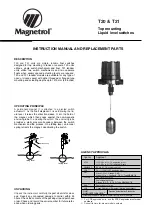
3-4
Table 3-2
Common Telnet configuration
Configuration
Remarks
Enter system view
system-view
—
Make the switch to operate as a Telnet
Server
telnet server enable
By default, a switch does
not operate as a Telnet
server
Enter one or more VTY user interface
views
user-interface vty
first
-
number
[
last-number
]
—
Make terminal services
available
shell
Optional
By default, terminal
services are available in all
user interfaces
Set the command that
is automatically
executed when a user
logs into the user
interface
auto-execute command
text
Optional
By default, no command is
automatically executed
when a user logs into a user
interface.
Configure the
protocols the user
interface supports
protocol inbound
{
all
|
ssh
|
telnet
}
Optional
By default, Telnet and SSH
protocol are supported.
Define a shortcut key
for terminating tasks.
escape-key
{
default
|
character
}
Optional
By default, you can use
Ctrl+C
to terminate a task.
Configure the type of
terminal display under
the current user
interface.
terminal type
{
ansi |
vt100
}
Optional
By default, the terminal
display type is ANSI.
Configure the
command level
available to users
logging in to the VTY
user interface
user privilege level level
Optional
By default, commands of
level 0 are available to
users logging in to a VTY
user interface.
Set the maximum
number of lines the
screen can contain
screen-length
screen-length
Optional
By default, the screen can
contain up to 24 lines.
Set history command
buffer size
history-command
max-size value
Optional
By default, the history
command buffer can
contain up to 10
commands.
VTY user
interface
configuration
Set the timeout time of
a user interface
idle-timeout minutes
[
seconds
]
Optional
The default timeout time is
10 minutes.
Telnet Login Configuration Task List
Telnet login configurations vary when different authentication modes are adopted.
















































